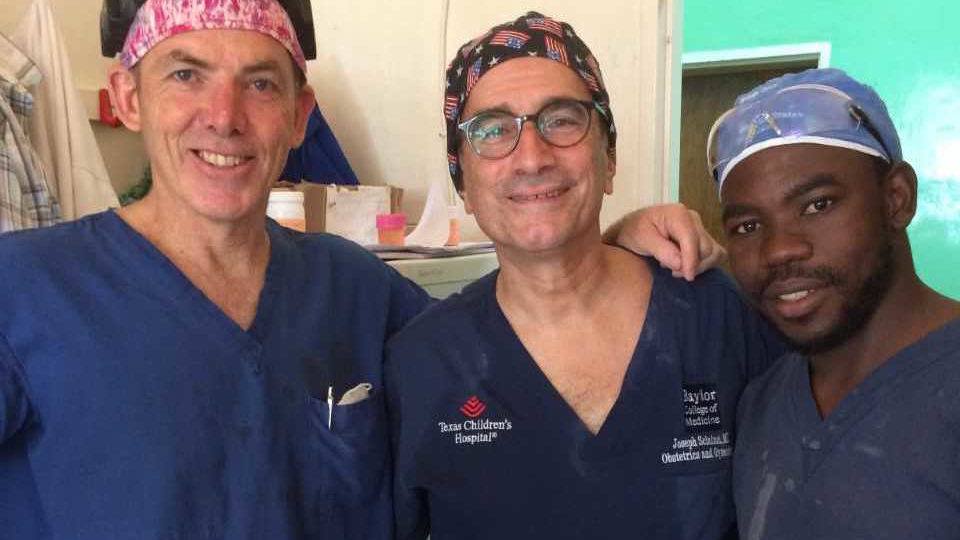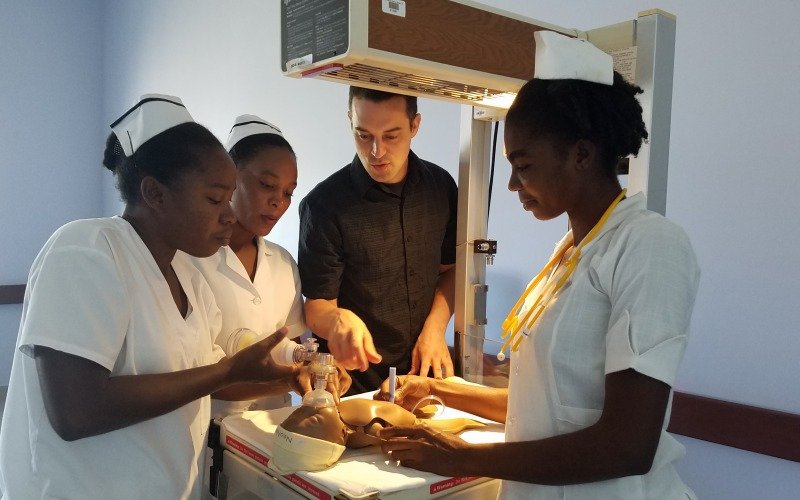On World Teacher’s Day: 10 Tips for Building Capacity in the Developing World Context

October 5th is World Teacher’s Day, a day to celebrate the role teachers play in providing quality education at all levels. In addition to building confidence and agency, education and ongoing development increases the potential of all people to contribute to their families, local communities, and the wider world.
At CMMB, we make education a key part of our programs. Our community health workers are continually working with mothers in communities to share the information they need to develop healthy behaviors and to know when to seek care at a health facility. We have programs that focus on empowering women through Mothers’ Clubs, microloans, and economic development projects, programs that give women the knowledge they need to take ownership of their lives and the lives of their children.
One of our most powerful capacity building programs is our international volunteer program. In addition to bringing essential care to patients in under-resourced areas, our volunteers also bring expertise to share with local healthcare professionals. And of course, as Ralph Waldo Emerson once said, “One of the most beautiful compensations in life is that no person can help another without helping themselves.” As our volunteers share their knowledge, skills, and expertise, the local teams offer invaluable knowledge to the volunteers.
One of our newest volunteers, Dr. Joe Sclafani who will be traveling to South Sudan later this month, recently presented to a group of fellow volunteers at our orientation in July. Here are his recommendations and insights about how to approach building capacity.
What is Capacity Building?
Capacity building is planting seeds. When our volunteers plant seeds, they look for ways to improve the health facilities they serve through quality improvement initiatives and capacity building.
- Clinical Quality Improvement: A systematic approach to changes in healthcare delivery that will lead to better clinical outcomes or improved system performance.
- Capacity Building: Development of knowledge, skills, and work performance that improve quality of care.
So, how do we put this into practice?
Doctor’s Notes: 10 Tips for Building Capacity
1) Identify gaps in knowledge.
Remember, small things can have great impact. And, they don’t necessarily have to be clinical. For instance, hand washing is a great example. Something as simple as hand washing can prevent the spread of disease and protect the local community.
2) Help develop skills systematically, not individually.
One of the best things you can do to make an impact during your time as a CMMB volunteer is to develop the skills, knowledge, and work performance of those you work with. One of the most effective ways to do this is through training workshops, followed by supportive supervision. Workshops keep everyone engaged and people can practice their skills by learning hands on!

Former volunteer, Dr. Charlie Cassidy, provides a group of health professionals at our hospital in Haiti with a practical training about how to resuscitate newborn babies.
3) Don’t be surprised if you find people have already been trained in the skills you want to see develop.
Often times, people will have been trained on particular skills, but forgot them or never actually used them. This is one of the many reasons why it is important to make sure someone on the ground becomes a “go-to person.” Someone who other staff members can turn to for questions when you are gone.
4) Your local team is a resource.
Use your team at the local hospital or health center for guidance. The staff there know how the local community functions and the best way to handle situations. At the same time, the local community members already trust them and will listen to them.
5) Don’t just identify problems, identify solutions.
Chances are, local staff already know about the problems, but they lack the resources to actually address them. The best thing you can do for the hospital and the local health team is to make the issue known to CMMB and offer your suggested solutions. They will then work with you and the local team to see what’s possible.
6) Get creative.
You will more likely than not find yourself in a position where you are without the medical resources you need. You will find ways to use what’s around you to solve the problem. Again the local team will be a HUGE resource in this area.

Former volunteer, Rose Paneno, sits and speaks with one of our CMMB staff about the community and it’s needs.
7) Make K.I.S.S. your favorite acronym.
“Keep It Short and Simple.” There is no point developing a complicated improvement intervention strategy. The reality is you that you only have so much time, and a complex plan requires far more time than you have. You need to develop small interventions that you can see through. If your strategies are short, sweet, and effective the local community will trust you and your initiatives.
8) Measure, measure, measure!
Make sure you measure the impact of your interventions or changes as best you can. Even if you don’t have all the data you can use what you have. For instance, say your goal is to reduce the number of premature deaths at your health facility. Well, if you know that the average rate of premature deaths around the world is 12%, and your health facility’s rate is around 25% then you have a problem. But by monitoring your own hospital’s prematurity rate you can measure the effectiveness of your intervention over time.
9) Get to know your health facilities inventory system.
Understand how your facility’s supply of medication works. How is it stored and who has access to it? For instance, as a clinician you know that when you deliver a baby you should always give oxytocin. If you observe that this is not happening, it’s not necessarily because there is a deficiency in knowledge, but rather, in inventory control.
10) Open yourself up to the culture.
Take the time to learn and understand the culture in the country where you are volunteering. Make sure you know the enabling and limiting factors of where you are going, and the kind of challenges you are likely to encounter.
Understanding the culture you are working in, will give you a better sense of the type of interventions that will work and the type of interventions that will not.
Opening yourself to the culture is also an important part of feeling at home in the community you serve and it will make your experience all the more rich.
